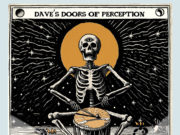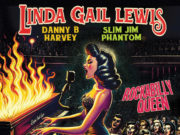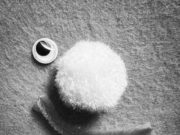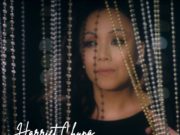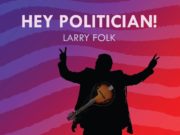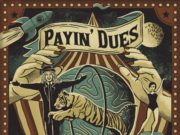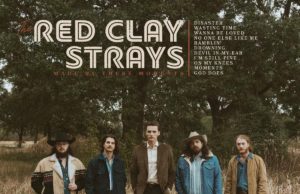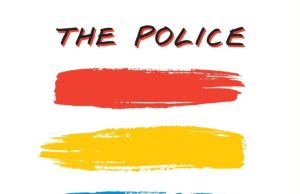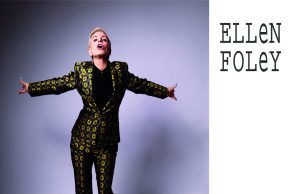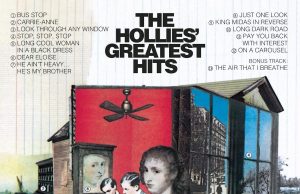THE EDITED PRESS RELEASE: “In the summer of 2022, a 10-year journey came to an end in Amsterdam. Its final score, as the curtain closed and the lights came up, was comprised of the orchestrations that preceded and followed the final act: The buzz of a barber’s razor, the droning resonance of a tattoo machine, and the brush of electric sound from the surprise gift of a friend.
For a decade, a leading figure and frontwoman of post-punk staple band Against Me!, Laura Jane Grace, had been slowly accruing black-laden bodywork by master Japanese tattoo artists Gakkin and Kenji Alucky. Beginning at her feet, Gakkin’s freehanded, organic figures and Alucky’s high-contrast geometric works had taken the three all over the world together just as it had taken inches all over Laura Jane’s figure. Finally, though this artistic exercise in time and tattoo ink came to a head. Literally. The last place Grace needed tattooed was her head.
Whilst on tour in Europe that summer, Grace, reached out to Gakkin. His shop had been relocated to Amsterdam and the two agreed to meet while they were both there. Pain of course was a consideration, but the most decisive action was that Grace needed to shave her head. As a prominent figure in the trans community, Grace’s hair is tied to her physical identity, and she understood that shaving it would come with questions. That didn’t stop her though, and soon enough her scalp was bare, and she was under the deft hand of her trusted tattoo artist. Two days later, Grace’s head was adorned with bold stroked roses crying around and the wings of a bird of prey, the story was at its close. Or so she thought.
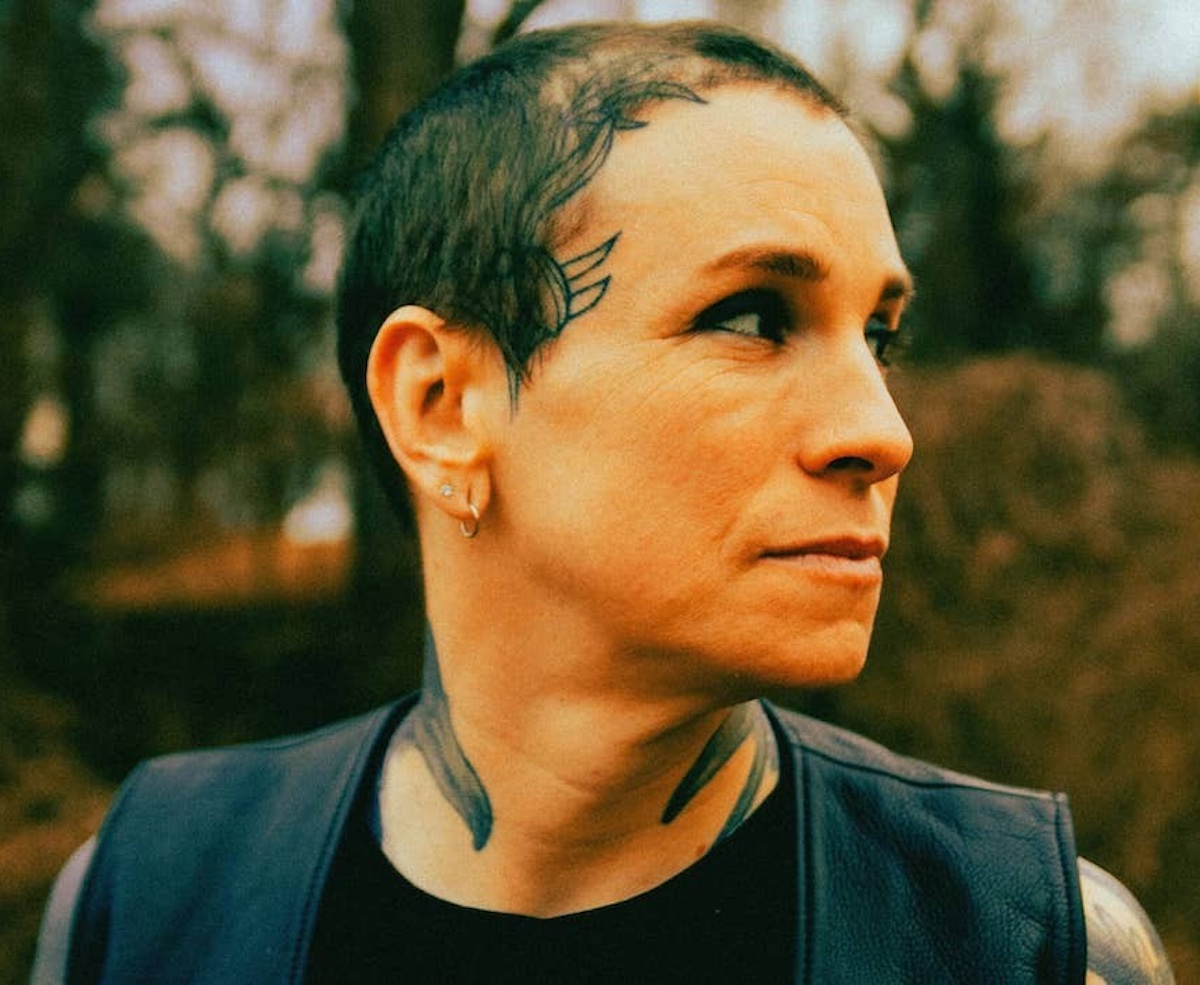
Just before her departure, Gakkin presented with a token of their work together over the years; a black hollow-body Gretsch guitar, adorned with swirling white and silver cloud-like shapes hand-painted by Gakkin. And it was on this guitar, in the American Hotel in Amsterdam, that Grace commemorated this experience by writing the sixth track Birds Talk Too on her newest album Hole In My Head.
A musical force since Against Me!’s debut in the late ’90s, Grace has never shied away from themes of political commentary, environmentalism, social critique, and candid self-exploration. Following the 2012 public announcement of her gender transition, Grace racked up accolades. Against Me! released its most acclaimed record to date, Transgender Dysphoria Blues in 2014, which was followed by an Emmy-nominated 10-episode companion documentary, True Trans with Laura Jane Grace. In 2016, Grace teamed up with journalist Dan Ozzi to co-write her acclaimed memoir Tranny: Confessions of Punk Rock’s Most Infamous Anarchist. Hole In My Head is Grace’s 12th album and an exciting hallmark in her colorful and extensive career.
Recorded at Native Sound in St. Louis with David Beeman and mixed and mastered by Matt Allison (engineer for acts such as Lawrence Arms and Rise Against), the album is a sonic curio cabinet containing multitudes. Hole In My Head features warm ’50s-rock-influenced guitar riffs, saved-for-later lyrics, love letters to St. Louis, dysphoria apparel, and thoughtful reflections on a punk life lived.
The record’s title track takes off with a driving, guitar-heavy approach that will be welcome to long-time fans of Against Me! Electric machinations drive the song for about 10 seconds before launching into the first verse and punctuated by two lines that serve as the chorus as the song progresses, “I won’t learn to feel less / I need a hole in my head.” The lyrics are captured visually in the album’s cover art done by the talented Australian artist and designer Annie Walters. Walters contrasts a black and white photograph of the crumpled, short-haired figure of Grace against a barrage of bright color and illustrative imagery that bursts upward from Grace’s splitting head. Much like the song, the cover at first comes off as explosive, possibly violent but upon closer inspection, it becomes clear that the stream of color stems from a physical need for comfort and release. Grace’s clutching hands (in image and in writing) are opening herself up.
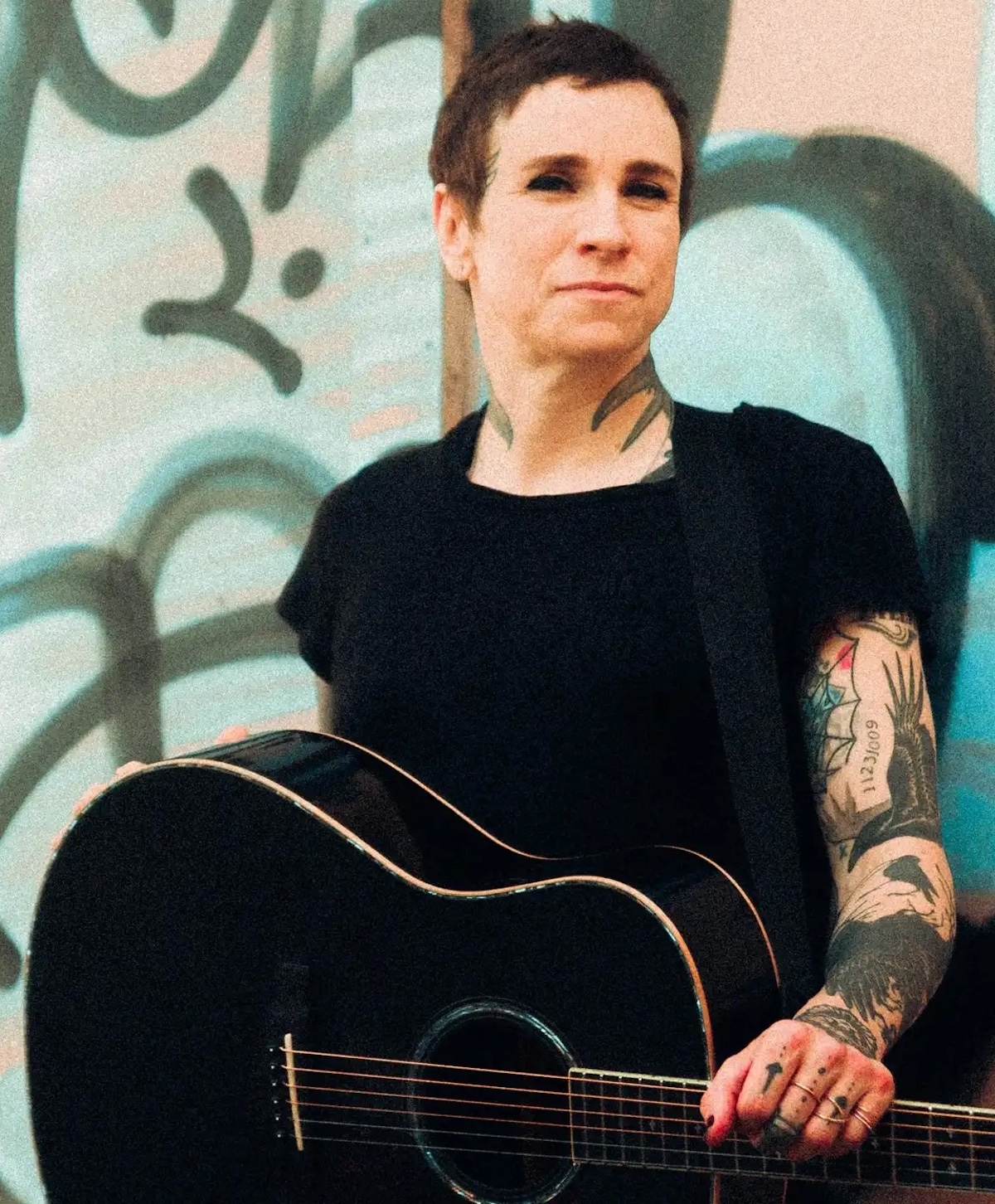
Keeping up the pace, I’m Not A Cop continues in the themes of self-examination and is backed by a ’50/’60s rock melody a la Jonathan Richman and Eddie Cochran. Richman’s influences make several appearances throughout the record. Grace replicates his distinctive musical styling in the form of jangly guitar rhythms and staccato response harmonies. As the melody is juxtaposed against present-tense ruminative lyrics, the song creates a melodic microcosm of sorts. A space in which the listener cannot stop themselves from examining the progression of rock music as a constant form of counter-culture form of expression.
The first single from the record is Dysphoria Hoodie, a staple in Grace’s setlist, and one which is as personal as it is pertinent in today’s climate. “This is a song about gender dysphoria and your favorite hooded sweatshirt. Any trans person out there knows what a dysphoria hoodie is — it’s the hoodie you wear when feeling low and dysphoric and you don’t want the world reading your gender. Hide your body shape, hide your head, and disappear as much as you can. Wrap yourself up in it like a blanket anywhere you go. Make your flesh become cotton. Instant protection from the outside world. My dysphoria hoodie happens to be an Adidas hoodie, so yes, this is in fact really just a tribute song to my favorite Adidas hoodie.”
Falling away from the comforts of Dysphoria Hoodie and following Birds Talk Too, the album pivots back to the influence of Richman in Punk Rock in Basements. Heavily inspired by Richman’s Parties In The USA and Dion’s The Wanderer, Punk Rock in Basements was written through a post-pandemic rose-colored lens. In the song, Grace looks back on the formative underground spaces of her youth. For decades, basement shows were hallmark experiences for anyone involved in their local punk scenes. They shaped movements, connections, and culture through the forced, sweaty proximity necessary to pour over raucous punk music. It’s hard to say whether we’ll ever be able to recapture the feelings of those spaces the way they were before the pandemic.
As the album’s sound begins to settle, Grace’s writing shifts to reflect her surroundings. For the last couple of years, she has split her time between Chicago and St. Louis. And despite her 2018 song I Hate Chicago, Grace wants it known she, in fact, does not hate the Windy City. As a parent, home is wherever Grace’s daughter is. But after spending the pandemic cooped up in an apartment where she was unable to make music the way she wanted, she needed to get out. Shortly after, Grace landed in St. Louis and (quite serendipitously) posted up in a studio that formerly belonged to Jay Farrar, frontman of Son Volt and founding member of Uncle Tupelo.
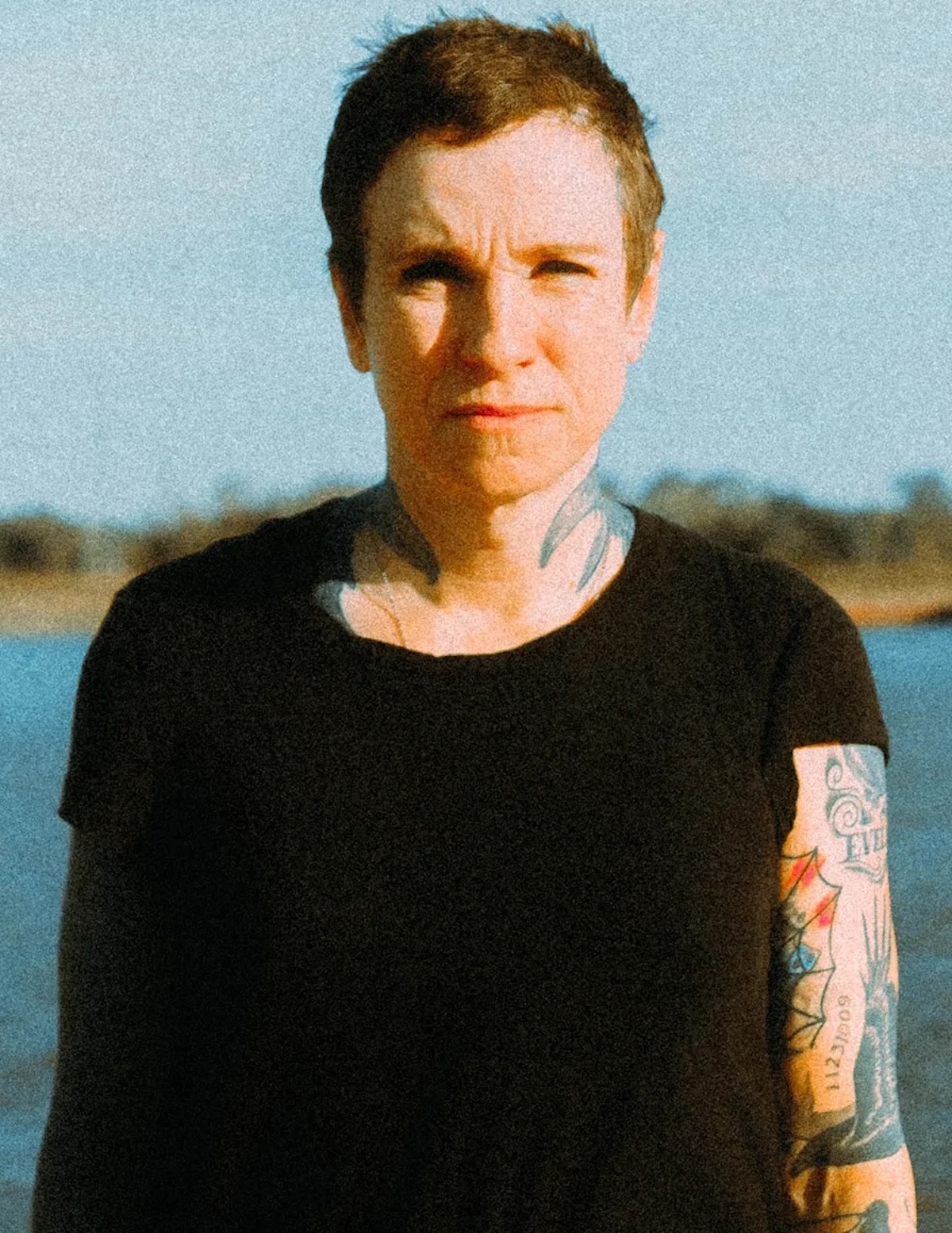
It was in St. Louis that Grace celebrated her 42nd birthday, a day commemorated in Tacos and Toast. Like its predecessor Cuffing Season, it slows down the tempo of the record moving forward as its lyrics delve into Grace’s renewed ability to make music in a new place. Grace follows up this love for St. Louis in the album’s ninth track, Keep Your Wheels Straight. Immortalizing a night of CBGB and nonalcoholic beers, a city plagued by urban decay is brought back to life. “St. Louis really opened its arms to me and I just have such a great time when I’m there… it’s a really special city … It’s like, to me it feels like the way every city in America felt when I first started touring in the late ’90s. And this crazy mix of like, fun and adventure, but danger and possibility”
Backed by her own drumming, Grace’s forward vocals complement her skills as a guitarist on Hole In My Head, while the added contributions of Drive-By Truckers bassist Matt Patton bolsters a full-band sound throughout the album. Patton, recruited through a brief conversation over Twitter, brought a smooth and collaborative experience to the project, despite the genre differences between the two. When asked, Matt said: “I would say that our working relationship was immediately comfortable just in the way that she was able to articulate you know, what it was that she wanted me to do. And you know, she had the musical cue and vocabulary to get her points across to where we can work efficiently without any confusion or disagreements. It was a, you know, it was a different level for me.”
Patton’s playing is all over the record, but really took his moment to shine when given a blank slate with the song Mercenary. It’s the oldest song on the record and had been workshopped on and off over the years. Patton had wrapped up his time in the studio with Grace and was headed home when Grace sent him the track and told him to do whatever he wanted with it. Mercenary has a more roots-based sound with a metronomic sliding bass sound which allows it to stand out on the album. Grace’s ever-clear vocals keep it consistent with the rest of the songs, though.
Grace has honed her craft as a songwriter, and takes on the difficult task of telling her stories without losing the details. In the album’s final tracks Hard Feelings and Give Up the Ghost, Grace flows between apologies and regrets to seemingly embellished experiences. Except when she sings “I’m standing at the center of the universe / Screaming at god, I’m not done” in the final track Give Up The Ghost, she’s being serious.
Hole In My Head is a record which captures the nuances of humanity and experience in a strangely optimistic manner. The lightness of its influence and the journalistic recollection of experience set against a battered and warm folk-punk delivery from beginning to end make Hole In My Head a comfort. It is a welcome embrace of life and just the start of a new chapter in Grace’s raucous journey.”


